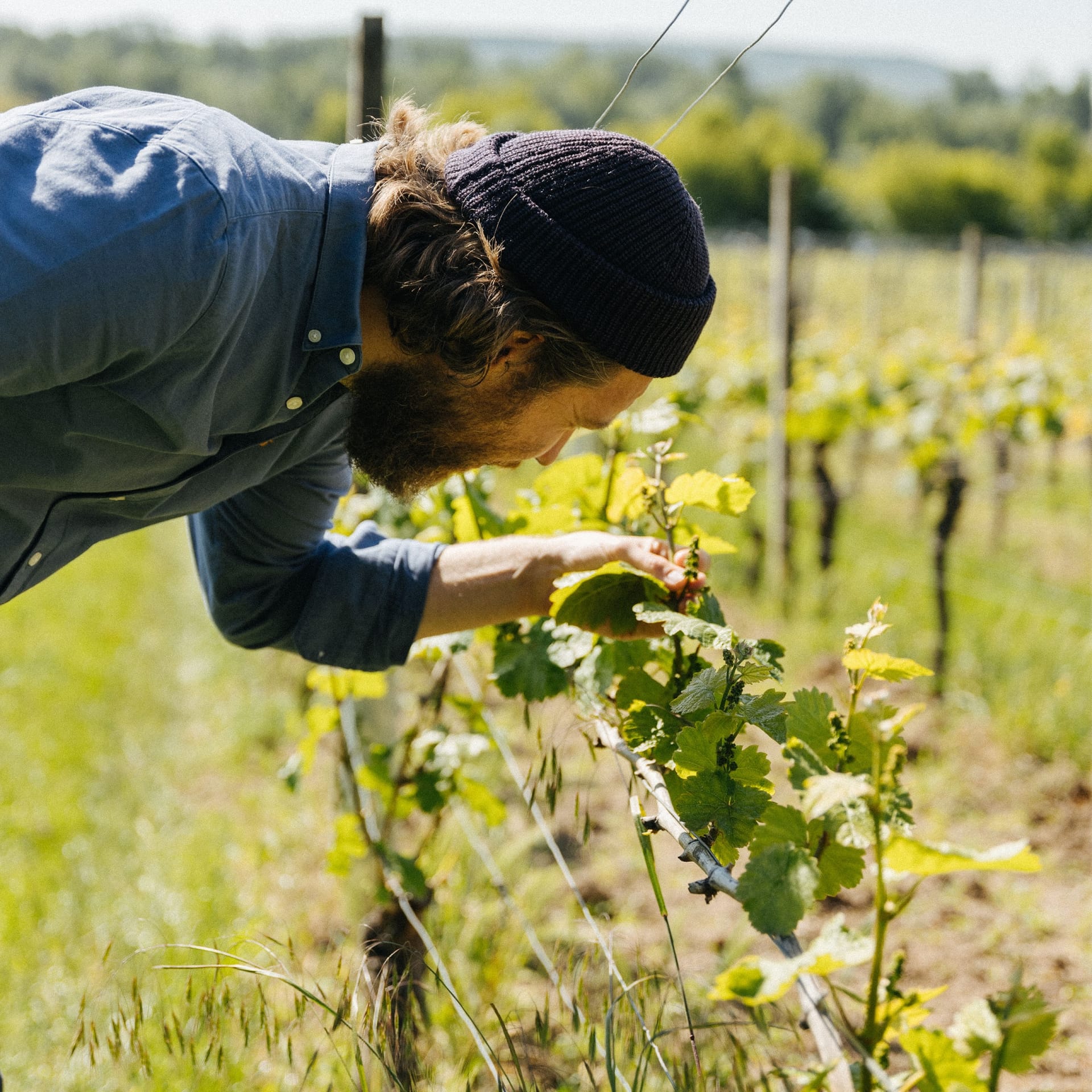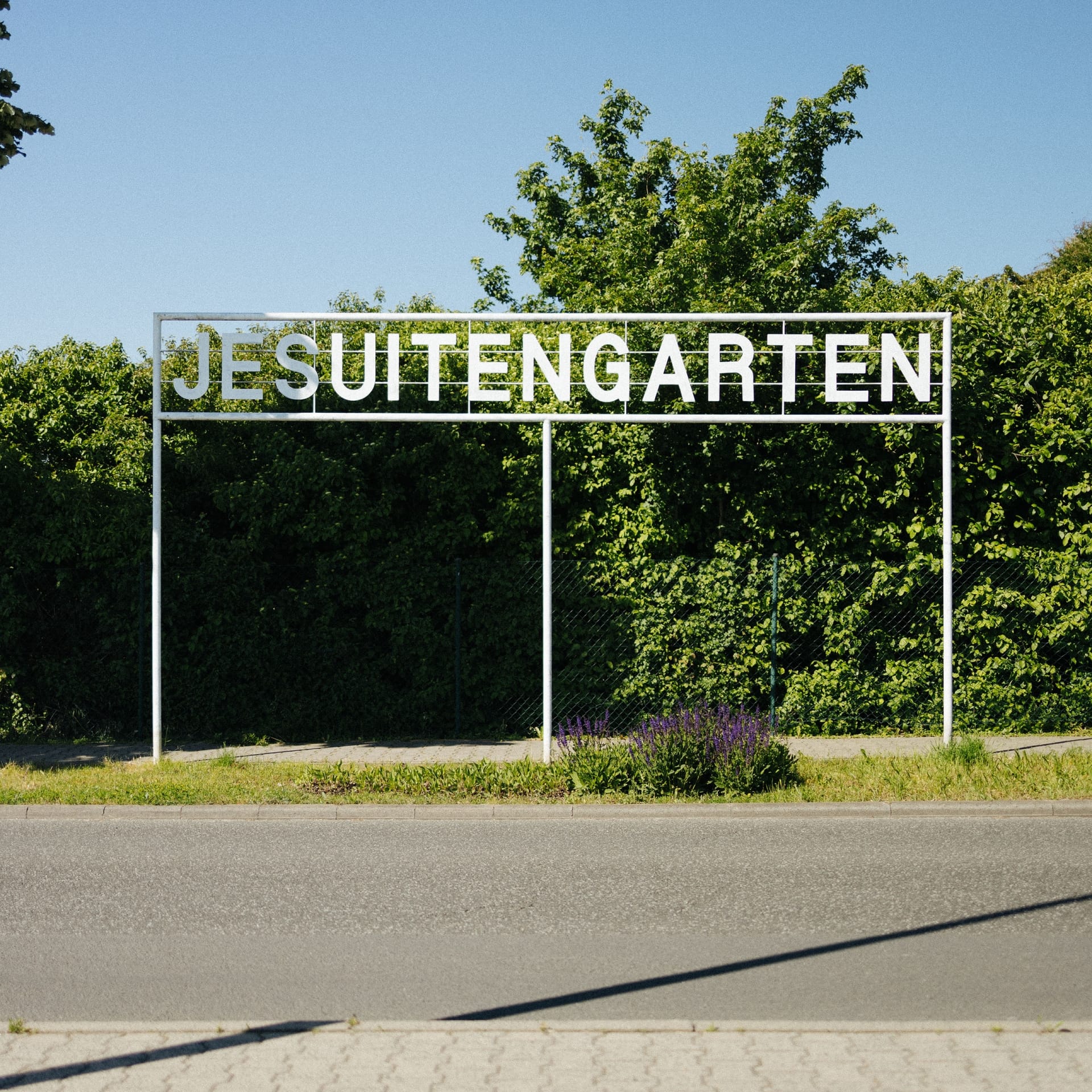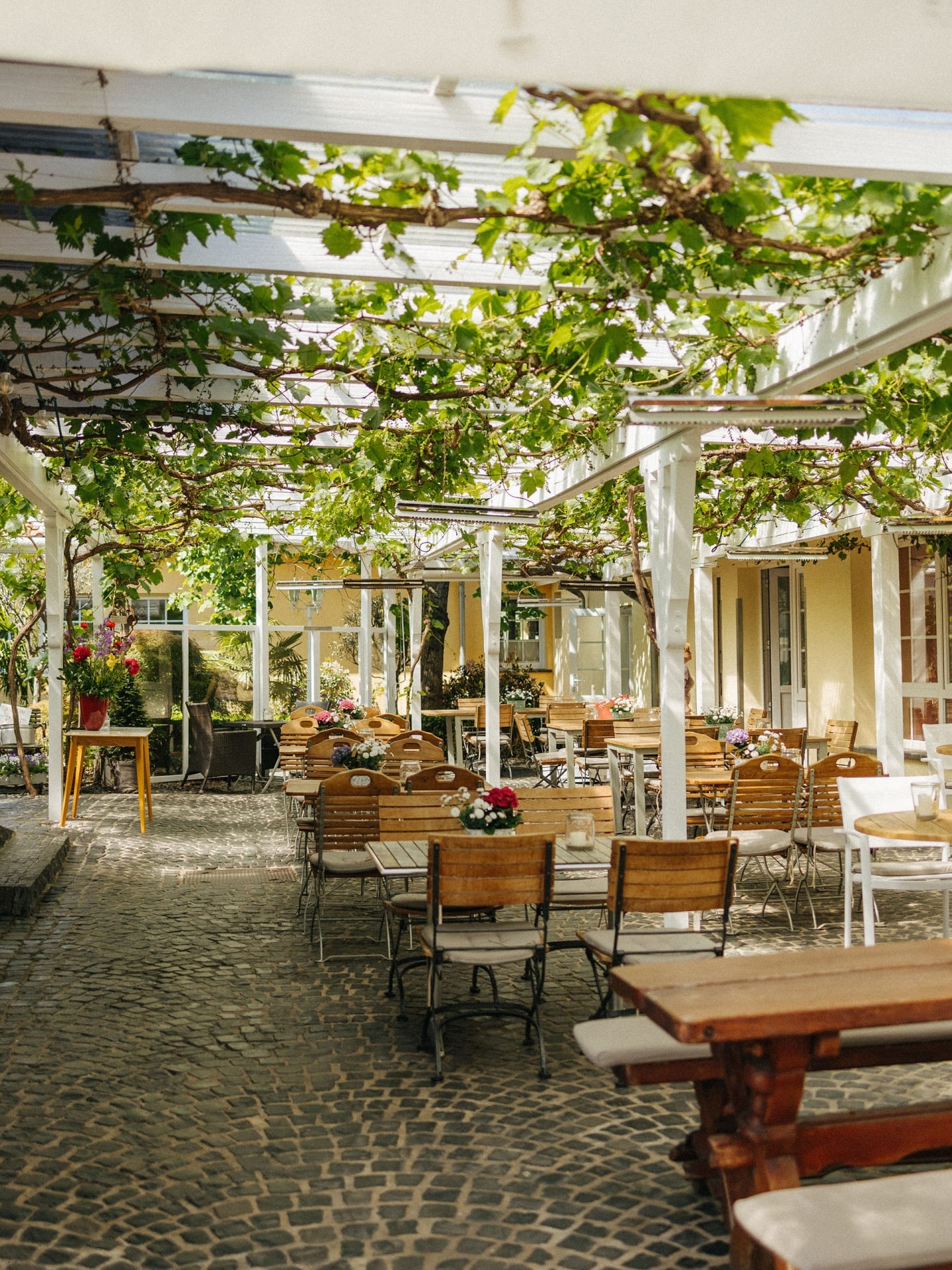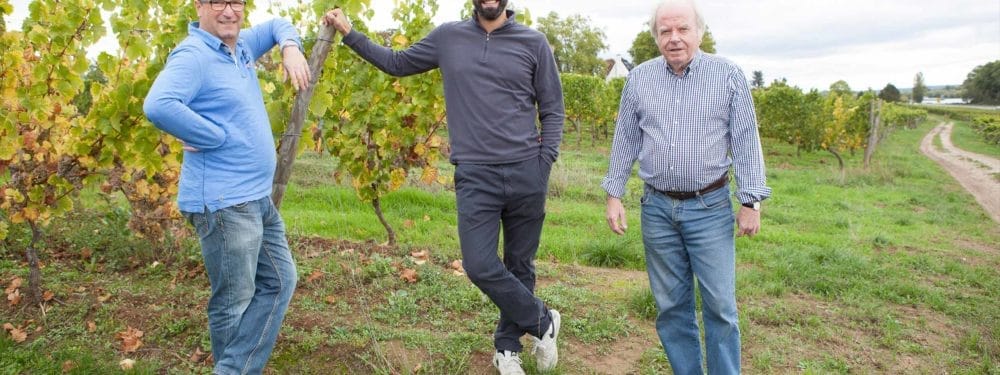Welcome to Jesuitengarten.
We are already in the middle of the year, about time to check our vines again.
As an agency for packaging design, we have signed a management contract with the Allendorf family for our line in the Jesuitengarten (GG Lage). There are 80 proud vines there and we stop by regularly to find out how they are doing. The harvest is also tackled again!

This year the vines are about 3-4 weeks late compared to previous years. It was just really cold so far. At the moment a lot of leaves have formed and blossoms or pebbles can be seen. The buds already look like small grapes, but that is only apparently so and this is where the name Geschein comes from.
The flowers will soon open and then pollination takes place. Not necessarily by bees, however; the wind helps the hermaphrodite plants to self-pollinate. Riesling, however, tends to trickle. This means that a large part of the now visible flowers do not turn into berries, but fall off beforehand.
Reduced yield is a profit
A yield of approximately 55-60 hectoliters per hectare is expected, i.e. 5,500-6,000 l. The number of liters x 1.3 gives the grape weight. That would be around 7.8 tons of grapes per hectare. This is a deliberately reduced amount in order to increase the quality of the grapes and thus of the wine. It’s about quality and not about quantity, after all, our vine section is in the Jesuitengarten, a VDP-certified Great location.

Vine training
The sight of the vines also reveals something about the methods of upbringing. There are various possibilities or even philosophies here. This can be used, for example, to react to climatic conditions. If the grapes hang close to the ground, they become very warm, so they are “trained” in such a way that the grapes hang higher so that they are not damaged even in extreme temperatures. In 2019 there were peaks of over 40 ° C that can be compensated for. Additional shade can be created through the foliage wall, with the ratio of leaves and grapes playing an important role.
One experiment to make the grapes less sensitive to the sun was the cultivation of red Riesling. These are white grapes with pigments that provide protection. That was less successful than hoped, but still turned out to be good wine.
The vegetation in the vines also influences the soil and the supply of the vines with water and nutrients. Ground cover takes away water from the vines, but provides nitrogen. Without any planting, the soil threatens to wash out.
With nature to perfection
Caring for the vines is therefore a complex matter and requires some knowledge in order to achieve the desired results. Allendorf has a long tradition of working with nature to get perfect wines into the glass. What was already common will soon be sealed. Allendorf is currently working on obtaining organic certification. We toast to that!
What does a packaging design agency have to do with grapevines? We want to get to the heart of the matter before we design the surface – i.e. the packaging. Only those who understand a food can translate the taste into a suitable packaging design. That’s why creative minds in our kitchen deal with food long before it comes to Packaging Design.












